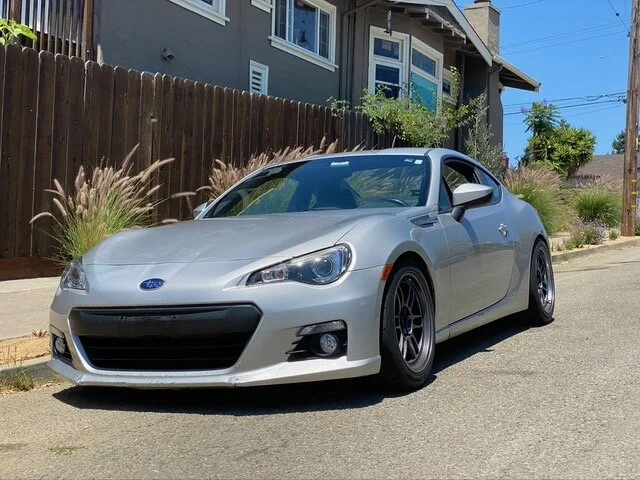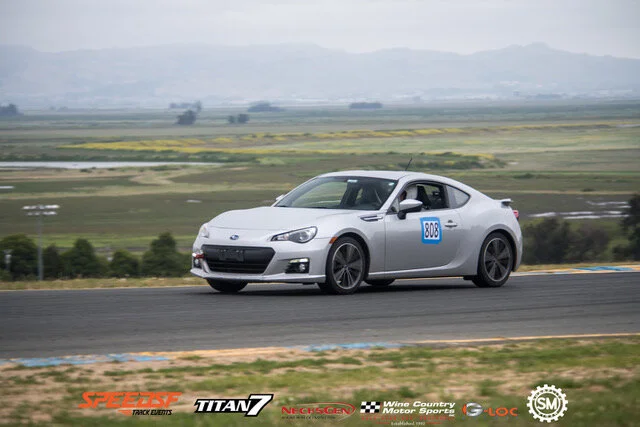Matt's BRZ: Simple, Straightforward, and Sharp
After taking a few years away from sports cars, Matt Delacruz caved and realized a deep need for some of that old fix in his life. The F10 535i had lost some of its charm. He sold the sedan and leafed through a few recent racing mags while thinking of the rightful successor.
Another stable Impreza, the car he cut his teeth in? Maybe another Miata, a 325i, an S2000, or something else light and nervous? Go the extra mile and drop big boy bucks for a Lancer Evolution VIII? One track-ready Evo popped up on Craigslist and he would’ve bought it, but someone snagged it first.
Preferably, he’d get something newer and less abused. Also, building the car meant about as much as actually driving it. The Evo wasn’t meant to be—plus, he’d owned plenty of AWDs over the years. That helped narrow it down a bit.
His Subaru BRZ stayed mostly stock for the first two years of ownership. Well, he made a few minor changes to the car, but a few cosmetic touches, a set of RPF1s, and a set of solid red taillights made little difference on the driving; they just helped it stand apart from the group.
Even in stock trim, it worked well for the mountain driving that rekindled that fire felt in the good old days of teenage hooliganism. But a wiser, more capable driver knows that the track is where they should get their kicks, and so he started modifying it, slowly at first, for track use.
It began with Carbotech XP8 and Verus camber plates. Innocent enough. The car looked and sounded stock and, for all intents and purposes, was stock—it just turned a little better and stopped with some confidence. Those, an alignment, and a set of RE71s, gave a surprising amount of pleasure, but then again, it’s got a strong foundation. Progressive and compliant enough for curbs, it was still very much a street car that had to be thrown around a little.
Sharpening the car wasn’t a totally straightforward process. Accepting the fact that he had to drop real coin was the first hurdle he had to cover. Then, months were spent researching because Matt, always a meticulous person, aimed to do it right the first time. Unfortunately, it didn’t exactly go to plan.
The respected voices pointed him towards KW Clubsport 2-ways with 6/7kg springs. Then came SPL Control arms, camber arms, sway bar links, and traction arms; Whiteline toe arms; a Pedders 21mm front sway bar, and a Whiteline 18mm rear. All those arms, a bigger footprint from 245-section tires, and a little more seat time had made him confident in a car that was no so confidence-inspiring. It had gain speed and agility, but it was now a little spikier than before.
But the snowball was gaining size and momentum, which made swiping the credit card for the next few purchases a little easier than before. Next came an AP Racing Sprint Kit with Ferodo DS2500 pads, and all the resultant squealing made any notion of preserving this as a plush street car fly out the window. Because of that, he didn’t have much difficulty pulling the rear seats and fitting an Autopower 4-point roll bar/ harness bar.
The BRZ had now improved upon its strong points; a sharp, agile car that did well at slower tracks. It was time to acknowledge the car’s biggest shortcoming: the FA20 needed some grunt. While he toyed with the idea of forced induction and an engine swap, he realized the complexities of both—as well as how limited on time he was. As he wanted to do most of the tuning himself, he sought a simpler solution.
It started with running through a few header options before he settled on the Tomei UEL header. An Invidia overpipe flowing through the stock catback made up the piping under the car, and a set of FT86 Speedfactory mufflers made an appearance before he removed ‘em for the stock ones. With the rear seats torn out, the cabin was already loud enough.
But breather mods will only do so much on a normally-aspirated 2.0-liter engine. The real power gains from a few things which couldn’t be considered bolt-ons. Delicious Tuning’s Flex Fuel Kit, complemented by an EcuTek flash, and a tank full of E85 yielded the kind of power needed to keep the S2000s from streaking away.
With a respectable 200 horsepower at the rear wheels and a broader torque curve, the car was now a contender at shorter, tighter tracks—evidenced by his class win in his first TT event, but more on that later.
By trimming a little heft with a Recaro SPG seat, stiffer 9kg springs, and a Braille lightweight battery, he’d basically decided that there was no hope of going back to be truly civil. But he traded comfort for confidence, so it was not long after that he tried his hand at the Speed SF Challenge. It was almost done on a whim, actually. As the day at Thunderhill West was coming to a close, Matt met with Joe McGuigan and asked to take a shot at the Street Class.
Braking a little later to raise some eyebrows, keeping his eyes up to avoid cramping his exits, and sliding around at pretty reasonable speeds in the half-wet conditions meant it wasn’t a relaxing lap, but, most importantly, the BRZ never startled him. “Honestly, it felt fantastic. It slid effortlessly and went exactly where I wanted it,” he said.
Even as it sits now, it’s somewhat more streetable than one might think. With the stock seat back in place, he even drove it to Montana and didn’t have any backache afterwards. For a car with a cage and coils, that’s about as streetable as you really can hope for.







